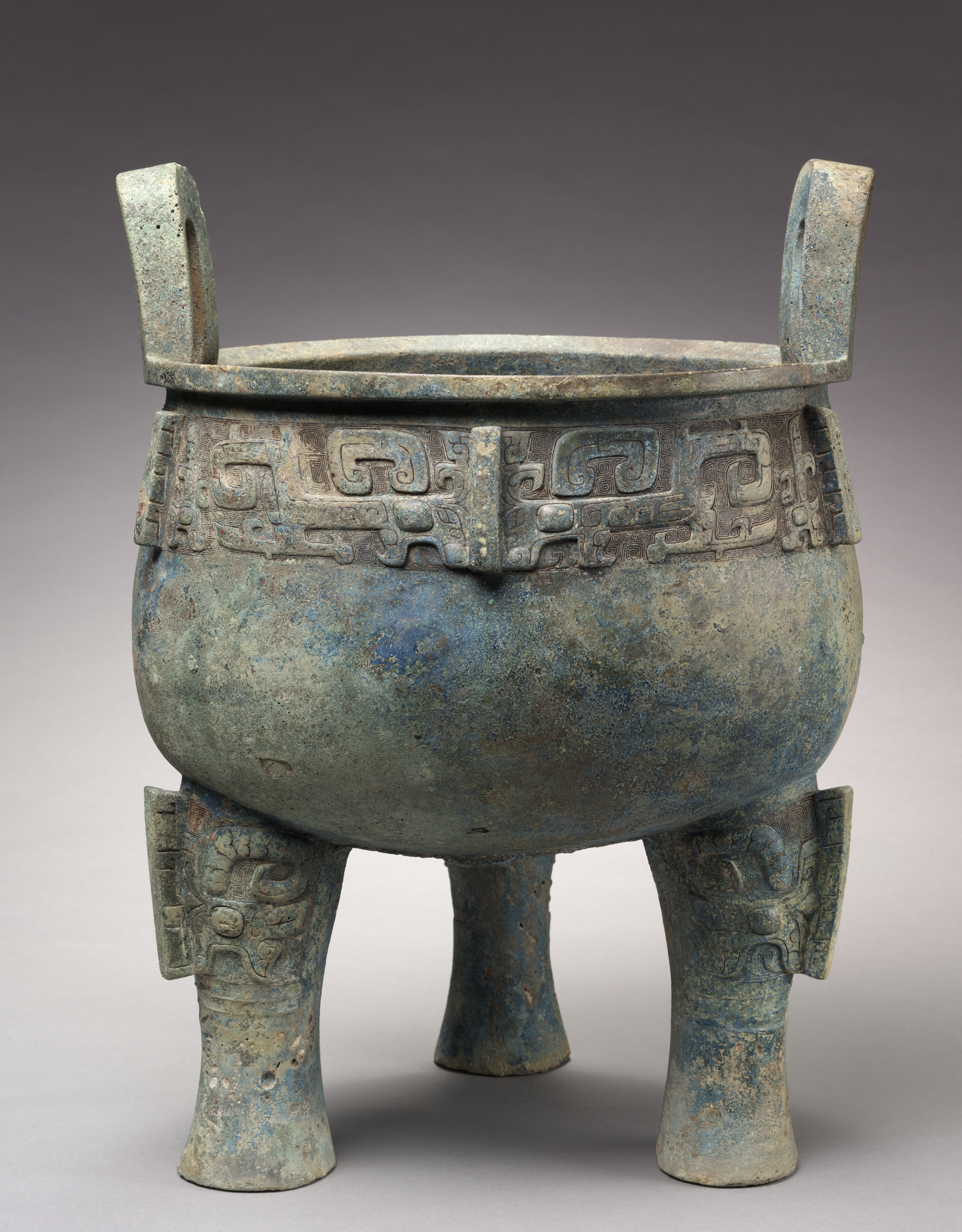The Cleveland Museum of Art
Collection Online as of April 19, 2024

Tripod (Ding)
1000s BCE
(c. 1046–771 BCE)
Overall: 57.4 cm (22 5/8 in.)
Location: 241A Arts of Ancient China
Did You Know?
Bronze tripods of the ding-type were vessels made in sets of different sizes to be used in rituals, in which grain and meat was offered to the spirits of the ancestors.Description
Large and majestic, this tripod gives the effect of overpowering force. Three animal masks (known as taotie) with coiled creatures are aligned in the decorative frieze. With the gaze of the staring eyes, the animal masks assert a religious presence and are meant to instill fear. Bold images of the ram embellish the three legs of the vessel.Bronze cauldrons (ding) like this were made for offerings of food to ancestral spirits in sacrificial and funerary rites performed by the rulers or members of the aristocracy. The ding, in particular, assumed additional significance as the symbol of political power and legitimacy. As signs of status in a stratified society, such highly valued bronzes were cast by its makers with the wish to be "forever treasured for ten thousand years, by sons' sons and grandsons' grandsons."
- September 20, 2003(Christie's New York, NY, sale 1113, September 20, 2002, lot 220, sold to the Cleveland Museum of Art)2003–The Cleveland Museum of Art, Cleveland, OH
- Cleveland Museum of Art. Cleveland Art: The Cleveland Museum of Art Members Magazine. Vol. 53 no. 05, September/October 2013 Mentioned & reproduced: p. 15 archive.org
- China through the Magnifying Glass: Masterpieces in Miniature and Detail. The Cleveland Museum of Art, Cleveland, OH (organizer) (December 11, 2022-February 26, 2023).
- {{cite web|title=Tripod (Ding)|url=false|author=|year=1000s BCE|access-date=19 April 2024|publisher=Cleveland Museum of Art}}
Source URL:
https://www.clevelandart.org/art/2003.2